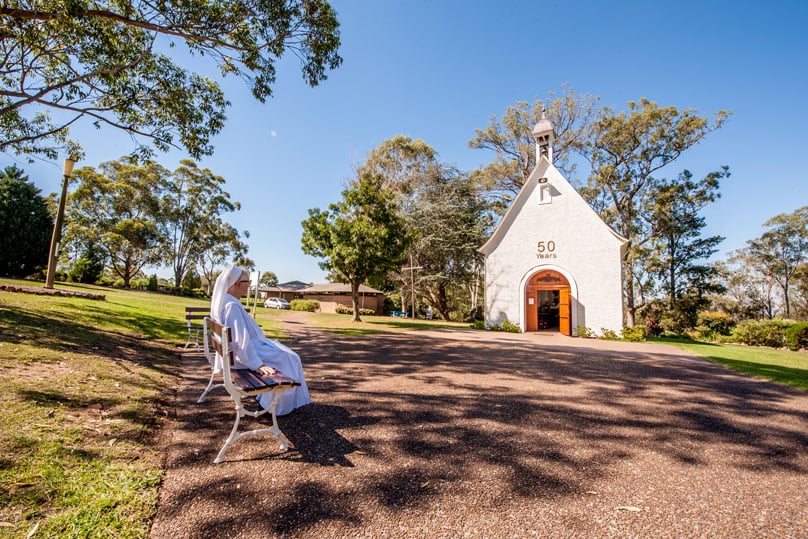
Most people who visit the Mt Schoenstatt Shrine in Mulgoa say the same thing—it is a place of grace, peace, and encounter with God.
It is 50 years since the Mulgoa Shrine dedicated to Our Lady was opened and blessed by Cardinal Gilroy, on 19 May 1968.
On Sunday 20 May—Pentecost Sunday—this year, the Schoenstatt family will gather at their National Shrine to celebrate its Golden Jubilee. Archbishop Anthony Fisher OP will celebrate Mass for the occasion along with Bishop Anthony Randazzo, Maronite Bishop Antoine-Charbel Tarabay, and Chaldean Archbishop Amel Shamon Nona. It is expected between two and three thousand people will attend.
Since it first opened, the Shrine at Mulgoa has been a spiritual oasis for people from all walks of life—for families, single people, youth, consecrated brothers and sisters, and clergy.
And that is what the Schoenstatt Movement does—embraces people of all states in life, encouraging them to enter into a Covenant of Love with Our Lady, to place their lives under her gentle and loving direction.
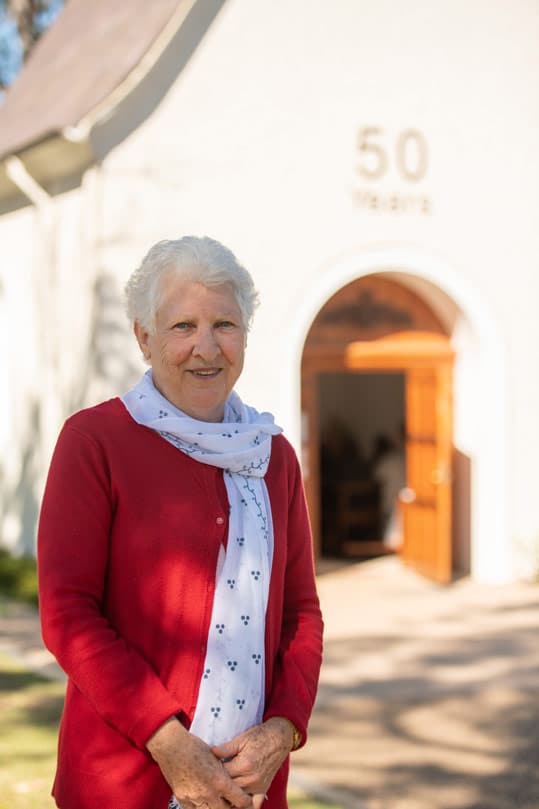
Shirley Hall who was present at the opening 50 years ago doesn’t remember a great deal about the day. Only that it was a windy day and that she sung in the choir.
“Even Cardinal Gilroy made mention in his sermon that it was not only a sunny day but a very windy day. It was a family celebration and as such it was a very joyful occasion.”
Cardinal Gilroy is recorded as saying in his homily, “… there must also be wind in addition to everything else, because it is beneficial to our health, to our mind. We can trust the Lord and accept what he sends us.”
He also foretold the significance the Mulgoa Shrine would come to have saying, “This is a little gem that has been constructed here on the top of this hill … I dare say that there are few places in the municipality and the electorate that will be so celebrated as this one in the years lying ahead!”
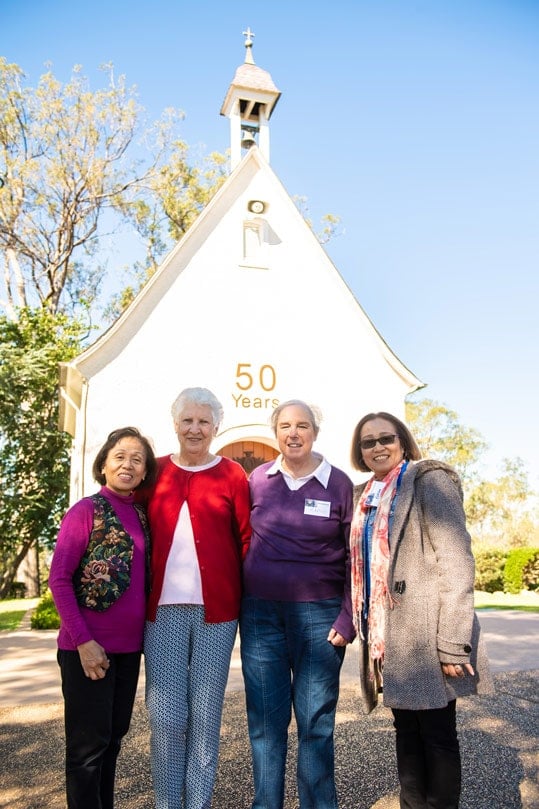
Further on he said, “It is a shrine that has been built in honour of the Blessed Mother of God. It is going to link Mulgoa, Wallacia, Penrith and all these districts with St Mary’s Cathedral itself.”
Seventy-three year-old Shirley, who has been a member of Schoenstatt’s Single Women’s League for many years, also remembers writing down prayers and petitions and placing them in a capsule that was buried beneath the Shrine.
“I knew it was a place of pilgrimage and blessing and I believed it was a place from which Our Lady distributed her graces and blessings.”
“The Shrine is for me—as for many people—a place where I feel I can go and be welcomed by my heavenly Mother and the Triune God. It is a place where I can be at peace—a place of tranquillity, a place where I can bring all my struggles, all my problems and give them to our Blessed Mother and ask her to help me.”
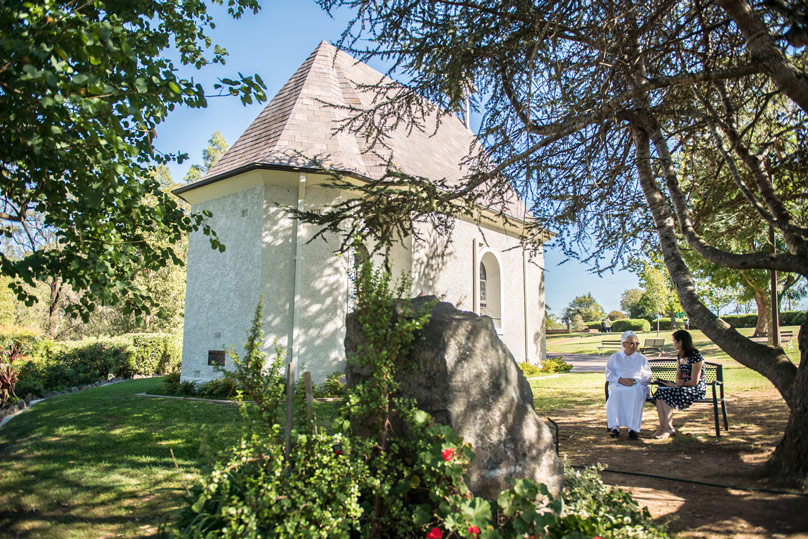
But why was the Shrine at Mulgoa built in the first place and what is the Schoenstatt Movement?
It is a lay apostolic Marian movement that was founded in 1914 by Fr Joseph Kentenich in the Schoenstatt valley in West-central Germany.
It is a way of life that involves entering into a Covenant of Love with Mary. Through entering a relationship with Mary one is inevitably drawn into a close relationship with her son, and with God the Father.
Fr Kentenich went on to found various communities within the Movement; communities for priests, consecrated brothers and sisters, families, men, women and youth.
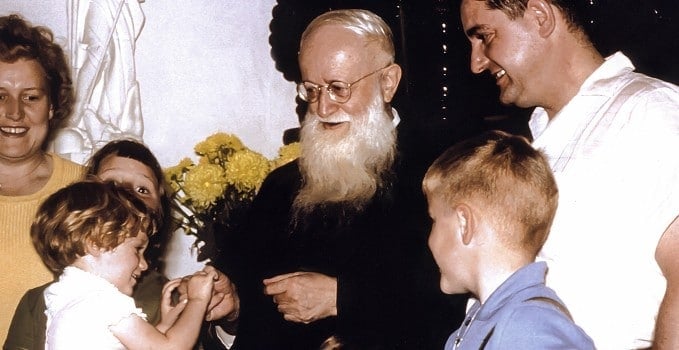
He founded the Schoenstatt Sisters of Mary in 1926 and 20 of the Sisters now live at Mulgoa.
In 1942 Fr Kentenich founded the Schoenstatt Family Institute and the Schoenstatt Brothers of Mary while he was imprisoned in Dachau concentration camp.
The focal point of the Schoenstatt Movement is the Shrine which members consider their spiritual home. The original Shrine in the German town Vallender was built as a place of pilgrimage where the Blessed Mother is honoured as “Mother Thrice Admirable, Queen and Victress of Schoenstatt.” Vallender was given the colloquial name “Schoenstatt” which means “beautiful place” after the Archbishop of Trier referred to it as such after making a visit in 1143.
There are now more than 200 replicas of the shrine around the world, three of which are in Australia—Mulgoa NSW, Kew VIC and Mt Richon WA.
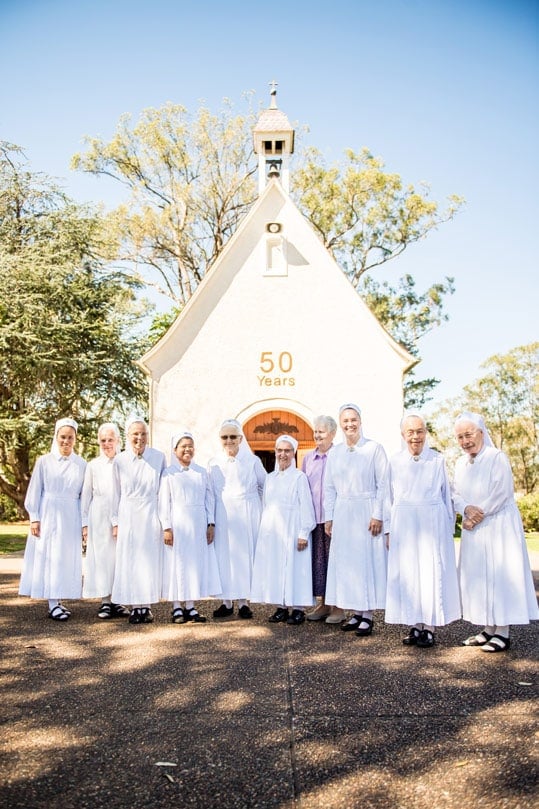
Fr Kentenich wrote to the Schoenstatt community in Sydney for the opening of the Mulgoa Shrine: “Today our Mother Thrice Admirable, Queen and Victress of Schoenstatt has made her home in this place in order to educate the people and leaders of Australia and to enable them to carry out the post-conciliar mission of the Church in their own continent as perfectly as possible.”
“…However inconspicuous the external celebration may have been, it will undoubtedly soon prove to have been a milestone in the history of our Australian family.”
Fr Kentenich passed away just four months later in September 1968 and the cause for his beatification was opened in 1975.
The Movement he founded has without doubt had a profound influence on the lives of many people in Sydney since the Shrine at Mulgoa was opened.
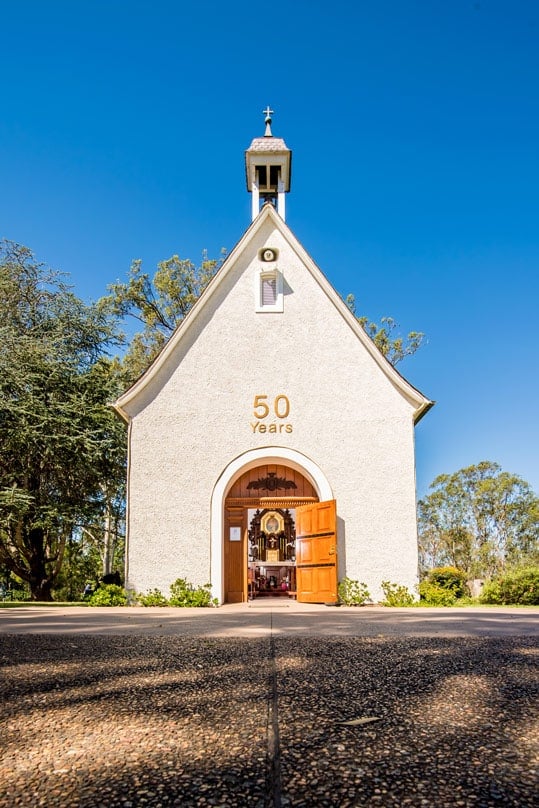
Michael King has been in the Men’s Branch of the Movement in Sydney for more than two decades and says the Shrine is a place where he “encounters God”.
“For me it’s very much a spiritual home, a special place of encounter with Mary, Jesus, the Holy Spirit and God our Father.”
“That’s what people find happens in and around that Shrine. In Celtic spirituality, they’ll call such places ‘thin places,’ as if in normal life there’s this great wall between ourselves and the divine. But in these places that wall is reduced to a very thin piece of wall. So it’s a ‘thin place.’ It’s almost like you can touch heaven.”
“Benedictine spiritually also explains it as a place of peace. All around the world Schoenstatt shrines are always located in a place surrounded by gardens and peace and serenity. The entire place is a refuge.”
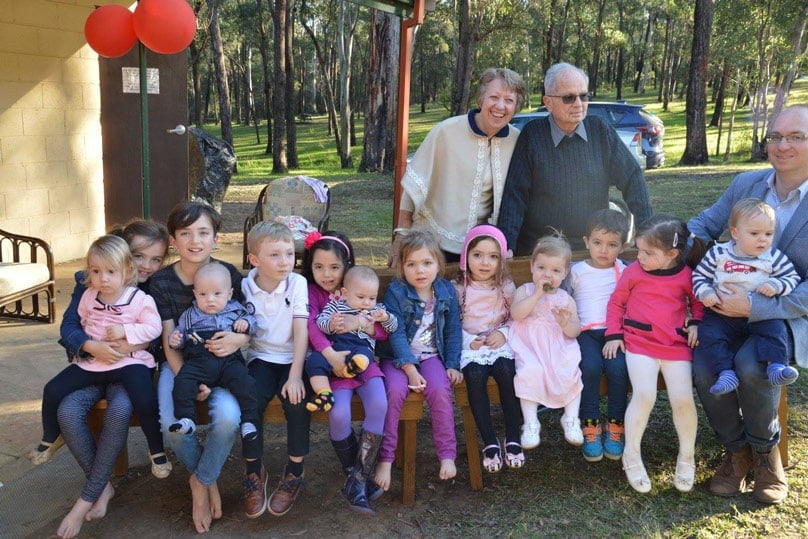
Along with her husband and four sons, Anne Toutounji has been involved over many years in Schoenstatt’s ministry to families.
“It’s a place you can go and connect with other families who have the same spirituality and values. It’s an avenue for families to get together and bond. We found our children would become friends with other like-minded families,” she said.
“I don’t think there’s anyone who goes to Schoenstatt who doesn’t feel peace and serenity. As we went there we realised it is a place of grace, it has to be because there’s so much peace when you are there. So for us it was a place to grow our spirituality.”
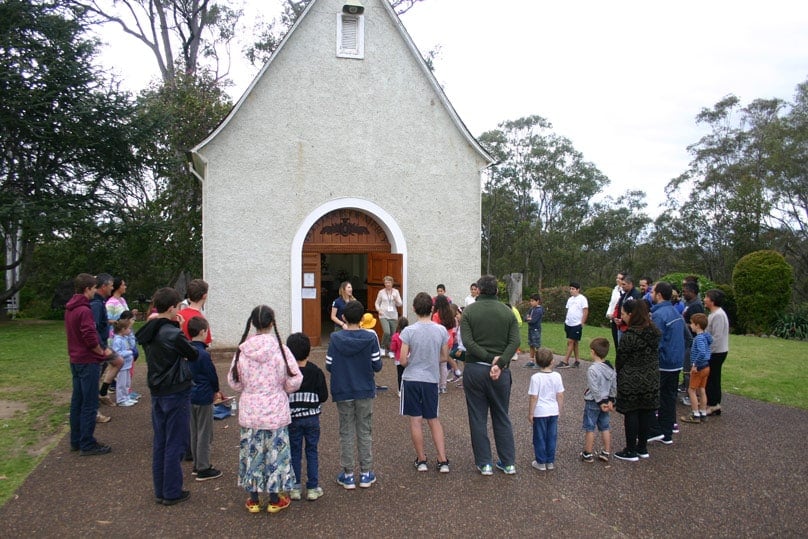
Amie Sanfilippo has been part of young adult’s groups at Schoenstatt for eight years and says her involvement with the Movement has transformed her life.
After learning about the life of Fr Kentenich, she travelled to the original Shrine in Germany and says she felt like she was returning home to see her dad.
“I was on the train going there by myself and I had this feeling that I was going home to visit my dad. It creates such a sense of belonging. It’s very real, there’s not a lot of piety about it. You experience real acceptance and love through the people you meet. It’s really transformed me as a person.”
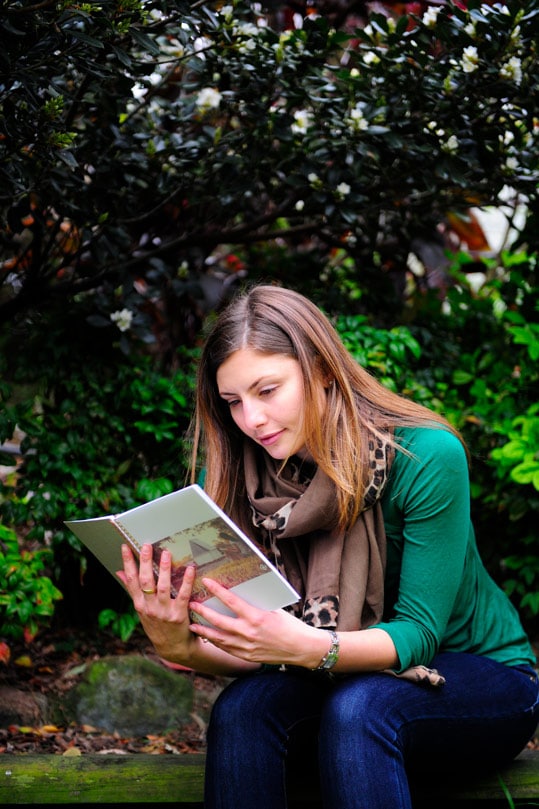
“The Shrine is a place of grace and when you go there you feel that grace, that peacefulness. When you visit the Shrine you bring to Mary your gifts that you’ve built up consciously. You bring her your sufferings or the good deeds you’ve done and then you also bring the wishes you have. It’s an on-going reciprocal relationship. Mary will transform those small things I offer her for a greater good.”
As the Schoenstatt family and their friends gather to celebrate the Shrine’s Golden Jubilee on 20 May it will be testimony to the predictions of both Cardinal Gilroy and Fr Kentenich. For the thousands who visit the Mulgoa Shrine each year it truly is an oasis and a beacon of hope—a place of grace and peace where people encounter Christ and his Blessed Mother.
